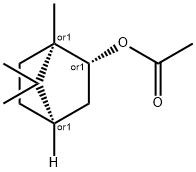Pinacol
Synonym(s):2,3-Dimethyl-2,3-butanediol;Pinacol;Tetramethylethylene glycol
- CAS NO.:76-09-5
- Empirical Formula: C6H14O2
- Molecular Weight: 118.17
- MDL number: MFCD00004462
- EINECS: 200-933-5
- SAFETY DATA SHEET (SDS)
- Update Date: 2025-12-17 09:49:24

What is Pinacol?
Chemical properties
white solid
Occurrence
Has apparently not been reported to occur in nature.
The Uses of Pinacol
pinacol be used as organic intermediates.
The pinacol coupling reaction with the inorganic electride [Ca2N](+)·e(−) as an electron donor in organic solvents was studied.
Pinacol is used in the synthesis of organic reagents such as alkenylphenylphosphonates and alkenylboronates.
The Uses of Pinacol
Pinacol is used in the preparation of synthetic intermediates like pinacolborane, bis(pinacolato)diboron and pinacolchloroborane by reaction with boron trichloride. Further, it plays an important role as an intermediate for biologically active compounds like antiviral, antibacterial, antifungal and antituberculous.
Definition
ChEBI: A glycol that is ethylene glycol in which all four methylene hydrogens have been replaced by methyl groups.
Preparation
By the bimolecular reduction of acetone.
Synthesis Reference(s)
Chemistry Letters, 10, p. 1469, 1981
Journal of the American Chemical Society, 98, p. 1986, 1976 DOI: 10.1021/ja00423a067
Tetrahedron Letters, 21, p. 449, 1980 DOI: 10.1016/S0040-4039(00)71429-8
Toxicity evaluation
Both the acute oral LD50 value in rats and the acute dermal LD50 value in rabbits exceeded 5 g/kg (Moreno, 1975). The acute oral LD50 of pinacol for male albino mice was found to be 28-6 mmol/kg (Wenzel & Koff, 1956). Pinacol showed anticonvulsant activity for electroshock seizures and Metrazol? convulsions; the PD 50 values (a measure of the protective dose) determined 15 min after oral administration of pinacol to mice were found to be 16-4 and 3-44 mmol/kg for electroshock and Metrazol convulsions, respectively (Wenzel & Koff, 1956).
General Description
The pinacol coupling reaction with the inorganic electride [Ca2N](+)·e(?) as an electron donor in organic solvents was studied.
Metabolism
Pinacol forms a glucuronide in the rabbit (Williams, 1959), and was found highly conjugated with glucuronic acid in the urine of chinchilla rabbits following oral administration of 1.0-1.5 g pinacol/kg body weight (Gessner, Parke & Williams, 1960). Pinacol was not utilized to any significant extent by endocrine tissues from human placenta, rat ovary, rat testis or rat adrenal gland (Ferguson, Baillie, Caiman & Hart, 1966).
Purification Methods
The hydrate is rendered anhydrous by azeotropic distillation of water with *benzene. Recrystallise it from *benzene or toluene/pet ether, absolute EtOH or dry diethyl ether. It recrystallises from water to give the hexahydrate. [Beilstein 1 IV 2575.]
Properties of Pinacol
| Melting point: | 40-43 °C (lit.) |
| Boiling point: | 171-172 °C/739 mmHg (lit.) |
| Density | 0.967 g/cm3 (20℃) |
| refractive index | 1.4347 (estimate) |
| Flash point: | 171 °F |
| storage temp. | Inert atmosphere,Room Temperature |
| solubility | alcohol: freely soluble |
| pka | 14.80±0.29(Predicted) |
| form | Crystalline Low Melting Solid |
| color | White |
| Odor | at 100.00 %. woody earthy patchouli warm bread |
| Water Solubility | Soluble in hot water, alcohol, and diethyl ether. |
| Sensitive | Hygroscopic |
| Merck | 14,7439 |
| BRN | 1340501 |
| Dielectric constant | 7.4(24℃) |
| Stability: | Stable. Combustible. Incompatible with strong oxidizing agents, strong bases, strong acids. |
| CAS DataBase Reference | 76-09-5(CAS DataBase Reference) |
| NIST Chemistry Reference | 2,3-Butanediol, 2,3-dimethyl-(76-09-5) |
| EPA Substance Registry System | 2,3-Butanediol, 2,3-dimethyl- (76-09-5) |
Safety information for Pinacol
| Signal word | Warning |
| Pictogram(s) |
 Exclamation Mark Irritant GHS07 |
| GHS Hazard Statements |
H303:Acute toxicity,oral H315:Skin corrosion/irritation H319:Serious eye damage/eye irritation H320:Serious eye damage/eye irritation |
| Precautionary Statement Codes |
P264:Wash hands thoroughly after handling. P264:Wash skin thouroughly after handling. P280:Wear protective gloves/protective clothing/eye protection/face protection. P321:Specific treatment (see … on this label). P305+P351+P338:IF IN EYES: Rinse cautiously with water for several minutes. Remove contact lenses, if present and easy to do. Continuerinsing. P332+P313:IF SKIN irritation occurs: Get medical advice/attention. P337+P313:IF eye irritation persists: Get medical advice/attention. |
Computed Descriptors for Pinacol
| InChIKey | IVDFJHOHABJVEH-UHFFFAOYSA-N |
Pinacol manufacturer
New Products
4,4-Difluoropiperidine hydrochloride tert-butyl 9-methoxy-3-azaspiro[5.5]undecane-3-carboxylate Indole Methyl Resin N-Isopropylurea N,N-Dicyclohexylcarbodiimide(DCC) MELDRUMS ACID 5-METHYLISOXAZOLE-4-CARBOXYLIC ACID Magnessium Bis glycinate Zinc ascorbate 1-bromo-2-butyne 2-acetamidophenol 9(10H)-anthracenone Erythrosin B, 4-Piperidinopiperidine 2-((4-morpholinophenylamino) (methylthio) methylene) malononitrile 2,4-dihydroxybenzaldehyde 3-(4-morpholinophenylamino)-5-amino-1H-pyrazole-4-carbonitrile Methyl 2-methylquinoline-6-carboxylate 2,6-dichloro-4-nitropyridine 4-Bromo-2-chlorobenzonitrile 2-(benzylamino)acetic acid hydrochloride 4-(tert-Butoxycarbonylamino)but- 2-ynoic acid 3,4-dihydro-2H-benzo[b][1,4]dioxepine 1-Phenyl-1-cycloprppanecarboxylicacidRelated products of tetrahydrofuran








You may like
-
 Pinacol, 98% 99%View Details
Pinacol, 98% 99%View Details
76-09-5 -
 Pinacol pure CAS 76-09-5View Details
Pinacol pure CAS 76-09-5View Details
76-09-5 -
 Pinacol CAS 76-09-5View Details
Pinacol CAS 76-09-5View Details
76-09-5 -
 Pinacol, 98% CAS 76-09-5View Details
Pinacol, 98% CAS 76-09-5View Details
76-09-5 -
 Pinacol 98% (GC) CAS 76-09-5View Details
Pinacol 98% (GC) CAS 76-09-5View Details
76-09-5 -
 Pinacol CAS 76-09-5View Details
Pinacol CAS 76-09-5View Details
76-09-5 -
 20677-73-0 (2,2-diethoxyethyl)methylamine 98%View Details
20677-73-0 (2,2-diethoxyethyl)methylamine 98%View Details
20677-73-0 -
 3-(4-(hydroxyamino)-1-oxoisoindolin-2-yl)piperidine-2,6-dione 98%View Details
3-(4-(hydroxyamino)-1-oxoisoindolin-2-yl)piperidine-2,6-dione 98%View Details
